
Did you know that you should take your window blinds down every month or so to check them over? Probably not, because that’s totally untrue.
But if the question of how to remove blinds has come up for a legitimate reason (usually because you’re replacing them, but potentially if you’re redecorating, painting behind the blind, or want to deep-clean the blind) knowing how to remove blinds the right way will help to ensure that you don’t damage them, or yourself, in the process.
Taking down blinds in the easiest and safest way requires the same basic approach regardless of the type of blind you have, but does vary slightly across different blind styles. This blog post will tell you how to remove blinds of different types, as well as providing some general tips on how to take blinds down that apply across the board.
Considerations to bear in mind before you start taking blinds down
- First of all, how high up is the blind? If you’ll have to stretch or reach over your head for it, get a stepladder or something else sturdy and safe to get you up to eye level with the blind. Trying to grapple with it above your head and suddenly finding out that it’s both heavier than you expected and has its own opinions about how to get to ground level is best avoided for obvious reasons.
- Secondly, if you’ve got ornaments on the windowsill beneath the blind or nearby, move these out of the way before you start. Also, think about where you’re going to put the blind in the first instance when you’ve removed it from the brackets, and that the space is clear.
- Thirdly, you know that comedy trope we’ve all seen a hundred variants of that involves someone carrying a horizontal ladder and leaving a trail of destruction in their wake every time they turn around with it? Window blinds can be really good at this too, so proceed with caution.
- Also, if your blinds are any wider than around 2 metres for those made of lightweight materials (roller blinds, verticals, and Venetian blinds) or 1.5 metres for heftier blinds (Roman blinds, faux wood blinds, and real wood blinds respectively) rope in an assistant. This is because these are the sort of widths at which your blind is likely to become too heavy for one person to comfortably and safely support, plus the width at which they’re going to become unwieldy even if you can bench press 250lb without breaking a sweat.
Next then I’ll move along to how to remove blinds of each of the most common types, each of which have their own potential vagaries and foibles to contend with.
How to remove roller blinds
Roller blinds are the most common and popular type of blinds overall, and so I’ll open with this one. The only tool you may need to remove roller blinds is a screwdriver, depending on whether or not your blind has a child safety clip or p-clip securing the control chain or not.
Here’s how to remove roller blinds in four steps
- Roll the blind all the way up to the top.
- Check for a child safety clip or p-clip, which if present, will be holding the control chain to the wall. If you do find one of these, use a screwdriver to free the control chain.
- Hold the blind at the control chain end and lift it up just a few millimetres, before pushing it towards the opposite side of the blind (the side where a pin inserts into the tube to hold that side of the blind up). This will release the blind from the bracket at the end you’re holding. (Figure 1)
- Lower the blind/tube down so that it’s below the bracket on the control end, then pull the blind towards you. This releases the other end of the blind, leaving it free of the brackets, at which time you’ll be supporting its weight. (Figure 2)
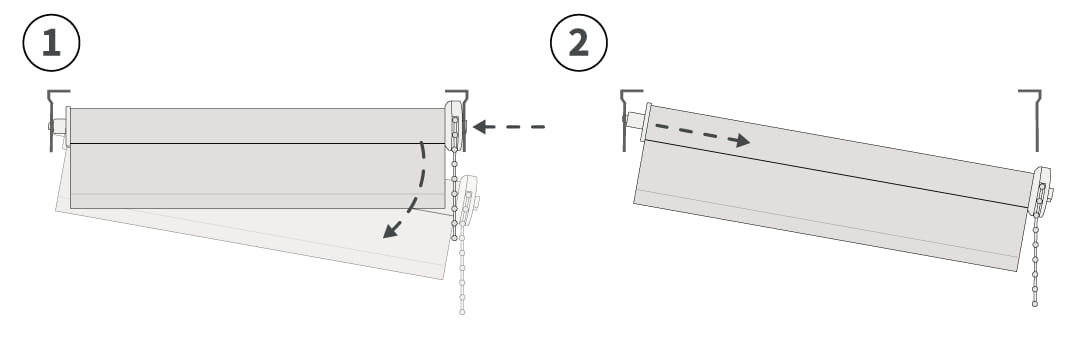
How to remove wooden blinds and faux-wood blinds
Wooden and faux-wood blinds can be heavy, so depending on the size of your blind you might want to get help to remove them. However, you won’t need any tools to remove wooden or faux-wood blinds.
Here’s how to remove wooden blinds or faux-wood blinds in five steps:
- Tilt the slats of the blind into the open position.
- Open the blind fully so the slats are all at the top of the window, and locked into position at there.
- Lift the blind’s pelmet or valance up by a few mm to free it, and then bring it towards you to remove it. This will allow you to access the blind’s brackets themselves. (Figure 1)
- Lift the cover over the brackets on both the left and right of the blind. (Figure 2)
- You can now pull the blind itself towards you, to free it from the brackets; at which point you will be supporting its weight. Bear in mind as mentioned that you may want help with this for larger blinds.
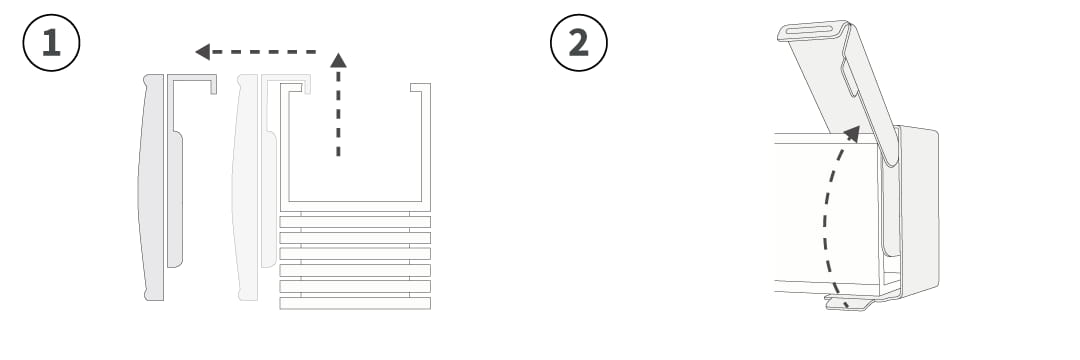
How to remove vertical blinds
Vertical blinds tend to be fairly lightweight, but you may need help with larger blinds. If your blinds are fixed to the window frame itself, you will need a screwdriver to remove the blind, but if the blind is fixed to the lintel, you won’t need any tools.
Here’s how to remove vertical blinds in four steps:
- Rotate the louvres of the blind into the fully open position, and then open the blind fully so that the louvres stack at the side.
- Unhook the louvres from the headrail and remove them; lay them out flat or roll them into a cylinder shape so that they don’t crease or become damaged.
- Next, you need to remove the headrail from the brackets. If the blind is fixed to the window frame itself, this involves unscrewing the small screw on each bracket; the headrail will now be free of the brackets, and you can lift it outwards and down. (Figure 1)
- If the blind is fixed to the lintel, you need to reach behind the headrail and push the back of each support bracket upwards to release the headrail. When you get to the final bracket, the headrail will be free, and you’ll be supporting its weight. (Figure 2)
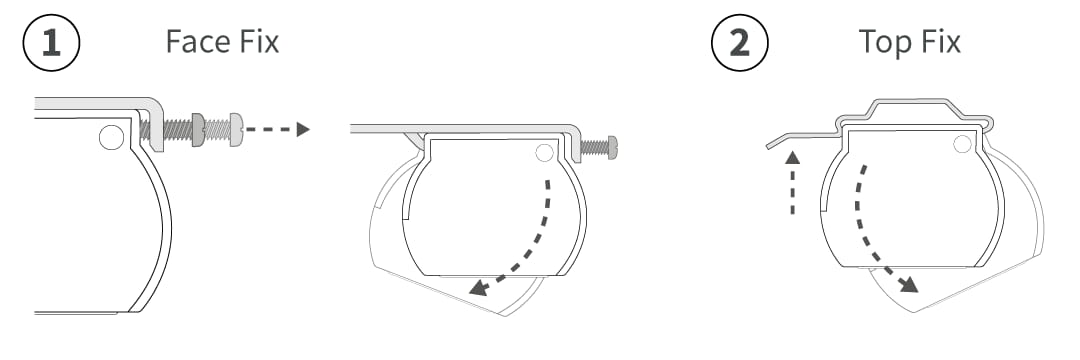
How to remove Roman blinds
Roman blinds are often made of deceptively heavy fabrics, so you might want an assistant on hand to help you to shoulder the weight of the blind when it comes free. You don’t need any tools to remove Roman blinds.
Here’s how to remove Roman blinds in three steps:
- Open the blind so that it goes all the way up, and lock it into position at the top of the window.
- At each bracket securing the blind, push on the headrail firmly but without excessive. With pressure applied, the headrail will be free to pull downwards and away from each bracket in turn. (Figure 1 & 2)
- When you get to the final bracket and free the headrail, the blind will be released and you (and potentially, your helper) will be left supporting its full weight.
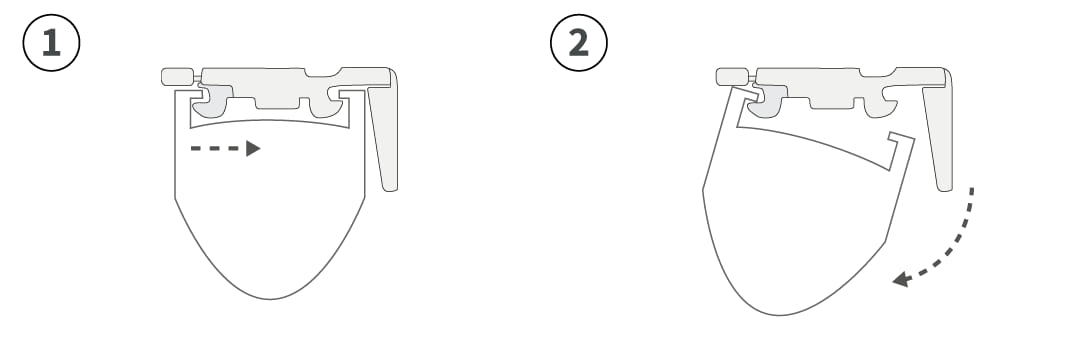
How to remove Venetian blinds
Venetian blinds have aluminium slats, which makes them fairly lightweight and so generally manageable for one person other than for larger blinds. However, you might want to get someone to help you with removing a Venetian blind anyway, as if the weight of the blind isn’t supported fairly evenly along its length, it might bend or buckle in the centre.
You don’t need any tools to remove Venetian blinds; and here’s how to do it in four steps:
- Rotate the blind’s slats to the open/horizontal position.
- Open the blind fully so that it locks into position at the top of the window.
- Locate the brackets along the length of the blind’s headrail and push each of them firmly but not heavily towards the window. With pressure applied, the headrail should be free to pull downwards and away from each bracket in turn. (Figure 1 & 2)
- When you get to the last bracket and release it, you will be left holding the weight of the blind.
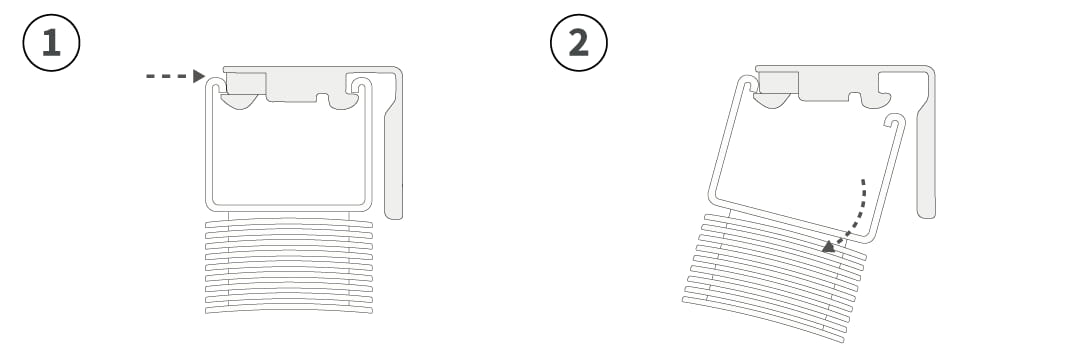
“And finally…”
Removing window blinds tends to require a similar approach for each respective type regardless of their manufacturer; but these directions are designed to tell you specifically how to remove blinds that we supplied, and so this may vary a little for blinds purchased elsewhere.
If you do get stuck along the way (whether you bought your blinds from us or not) feel free to leave a comment or drop me an email and I’ll talk you through what to do.




